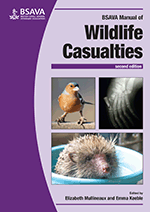
Full text loading...

The veterinary surgeon’s role in the investigation of wildlife crime falls within the developing specialist area of forensic veterinary medicine. The standard of investigation and reporting of alleged wildlife crime has improved markedly in recent times and, consequently, investigators have high expectations of the potential depth and quality of evidence provided by the veterinary profession. This chapter gives information to help veterinary surgeons recognize and record potential wildlife crimes to a standard that will assist the investigation process.
Investigating wildlife crime, Page 1 of 1
< Previous page | Next page > /docserver/preview/fulltext/10.22233/9781910443316/9781910443316.11-1.gif

Full text loading...












